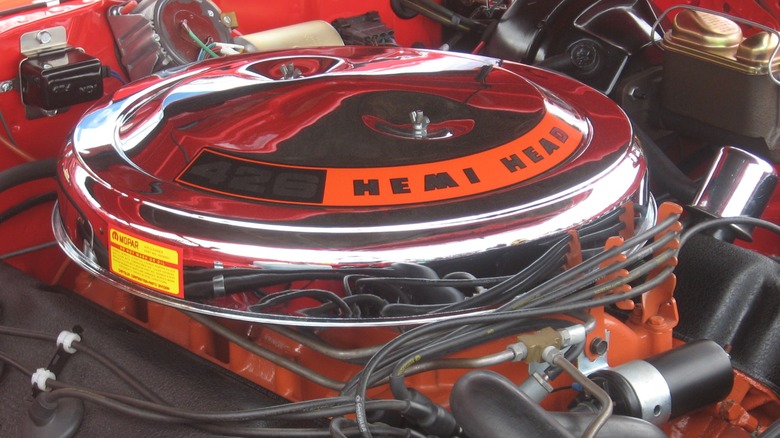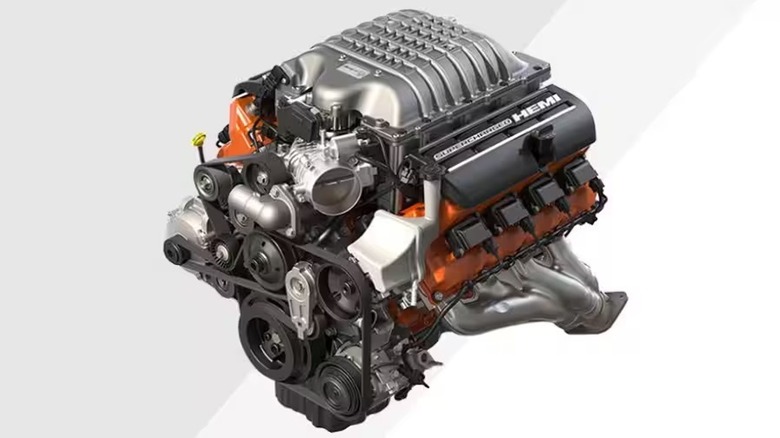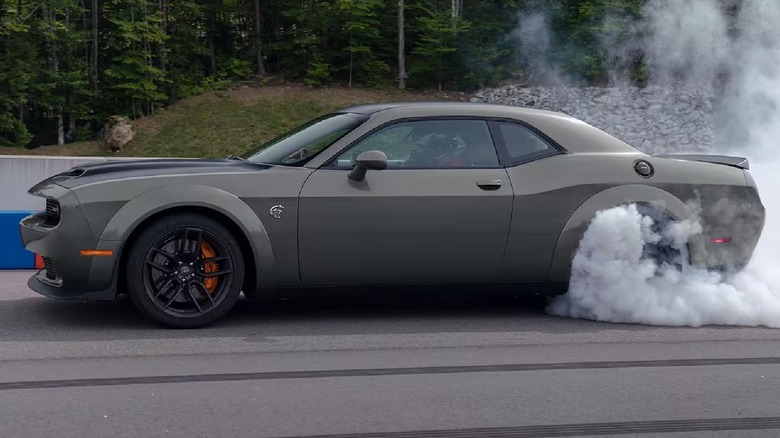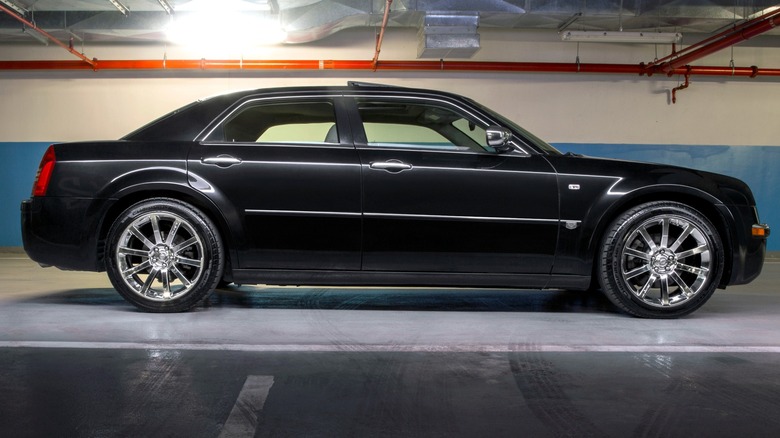Gen 3 Vs Gen 2 HEMI Engines: The Biggest Changes Chrysler Made
The first hemi engines were invented in the early 1900s to power the nation's first automobiles. In the 1940s, improved versions were developed for use in the airplanes of WWII. However, Chrysler's 2,500-horsepower V16 hemi (not to be confused with its popular line of engines with the brand name HEMI, which came later) wasn't ready for service until after the war, so it was never produced beyond the prototype stage. Following the war, Chrysler continued refining the technology and installed its first-generation HEMI V8, a 180 horsepower 331-cubic-inch version, in the 1951 Chrysler New Yorker.
The Gen 1 HEMI engine, its displacement ultimately increased to 392 cubic inches in 1957, demonstrated untapped potential. However, due to its size, weight, and cost of manufacturing, Chrysler's HEMI V8 was mothballed in 1959. The HEMI's limitations would not keep the automaker's racing team from reviving it for the 1964 NASCAR season. Its dominance on the track led to NASCAR homologation rules requiring the HEMI's availability in a limited run of production cars. The race-HEMI was adapted to create the 426 Street-HEMI, Chrysler's second generation of the HEMI V8.
The 426 HEMI powered some legendary vehicles until its demise after the 1971 model year. The Chrysler HEMI remained dormant for 30-plus years, until the 2003 debut of the Gen 3 5.7-liter HEMI in RAM pickup trucks. While Chrysler's Gen 2 HEMI was only available as the 426-cubic-inch Elephant version, the Gen 3 HEMI lineup includes versions with multiple displacements, induction systems, and missions.
[Featured image by Trekphiler via Wikimedia Commons | Cropped and scaled | CC BY-SA 3.0]
Chrysler's Gen 3 HEMI offers a range of displacement options
While the Gen 2 Chrysler HEMI engine was only produced with 426 cubic inches (7.0 liters) of displacement, the newer Gen 3 HEMI V8 evolved from the initial 5.7-liter (345-cubic-inch) to include larger offerings like the 6.1, 6.2, and 6.4-liter HEMI engines. The 5.7-liter HEMI features 3.917-inch (99.49-mm) diameter cylinders and a 3.578-inch (90.88-mm) crankshaft stroke.
Larger displacement HEMI engines soon followed, using the same crankshaft stroke as the 5.7 HEMI. The 6.1-liter (372-cubic-inch) HEMI uses 4.055-inch (103.00-mm) diameter cylinders, and the 6.2-liter (378-cubic-inch) HEMI has slightly larger 4.090-inch (103.89-mm) diameter cylinders.
The 6.4-liter, also widely marketed as the 392 HEMI, is essentially a stroked 6.2 HEMI. The 6.4 and 6.2 share the same 4.090-inch cylinder diameter, but the 6.4 HEMI gets its additional displacement from its longer 3.72-inch (94.49-mm) crankshaft stroke. For comparison, the original Gen 2 426 HEMI has 4.25-inch (107.95-mm) diameter cylinders and a 3.75-inch (95.25-mm) crankshaft stroke.
Chrysler added a supercharged induction option for the Gen 3 HEMI
The hemi engine is special because of the hemispherical combustion chambers of the cylinder heads. Other engine designs use cylinder heads with smaller combustion chambers and dished, flat, or domed piston tops to compress the trapped fuel-air mixture, hemi engine pistons typically feature a taller, oval-shaped domed top to compress the fuel-air mixture into the deeper cylinder head combustion chamber.
While the hemi design creates a more efficient combustion cycle and better fuel-burn timing than other designs, it's not without its limitations. Airflow through the engine is the most common limiting factor for naturally aspirated internal combustion engines, and Chrysler's HEMI line (its name capitalized to differentiate it from hemi engines made by others) is no exception. Engine designers seeking maximum power output from internal combustion engines often turn to forced air induction provided by turbochargers and superchargers.
The application of supercharged induction, one of the biggest changes Chrysler made between the Gen 2 and Gen 3 HEMI engines, came through its Street and Racing Technology (SRT) division. The supercharged 6.2 HEMI makes over 700 horsepower on pump gasoline and up to 840 horsepower on 100-octane fuel.
The Gen 2 HEMI had a singular mission, Chrysler changed that for its Gen 3 HEMI engines
When Chrysler began installing the Gen 2 426 HEMI in mid-1960s production cars to satisfy NASCAR homologation rules, its singular mission on the street was to dominate the burgeoning horsepower war between American automakers including Ford and Chevrolet. At the time, the "What wins on race day sells on Monday" school of thought was prevalent, and automakers went to great lengths to be competitive and gain a share of automobile buyers' attention.
The introduction of the 5.7-liter Gen 3 HEMI as an engine option for RAM pickup trucks signaled a change of mission for the HEMI. While power was an important aspect for the RAM, it certainly wasn't winning any races. Instead, advertisements focused on the 5.7 HEMI's torque and associated towing power. It wasn't long, however, that the aforementioned SRT HEMI engines brought the HEMI back to the forefront of racing.
While you won't find a Gen 3 HEMI under the hood of any NASCAR competitors, you'll likely find some of the lowest elapsed time slips at your local drag strip attached to Dodge models like Challenger and Charger SRT Hellcat, Challenger SRT Super Stock, and Challenger SRT Demon powered by the supercharged 6.2 HEMI.
SUVs from the Dodge Durango to the Jeep Grand Cherokee, as well as upscale sedans like the Chrysler 300 SRT-8 also feature Gen 3 HEMI power. Jeep even put the Gen 3 392 HEMI in a Wrangler Rubicon.



